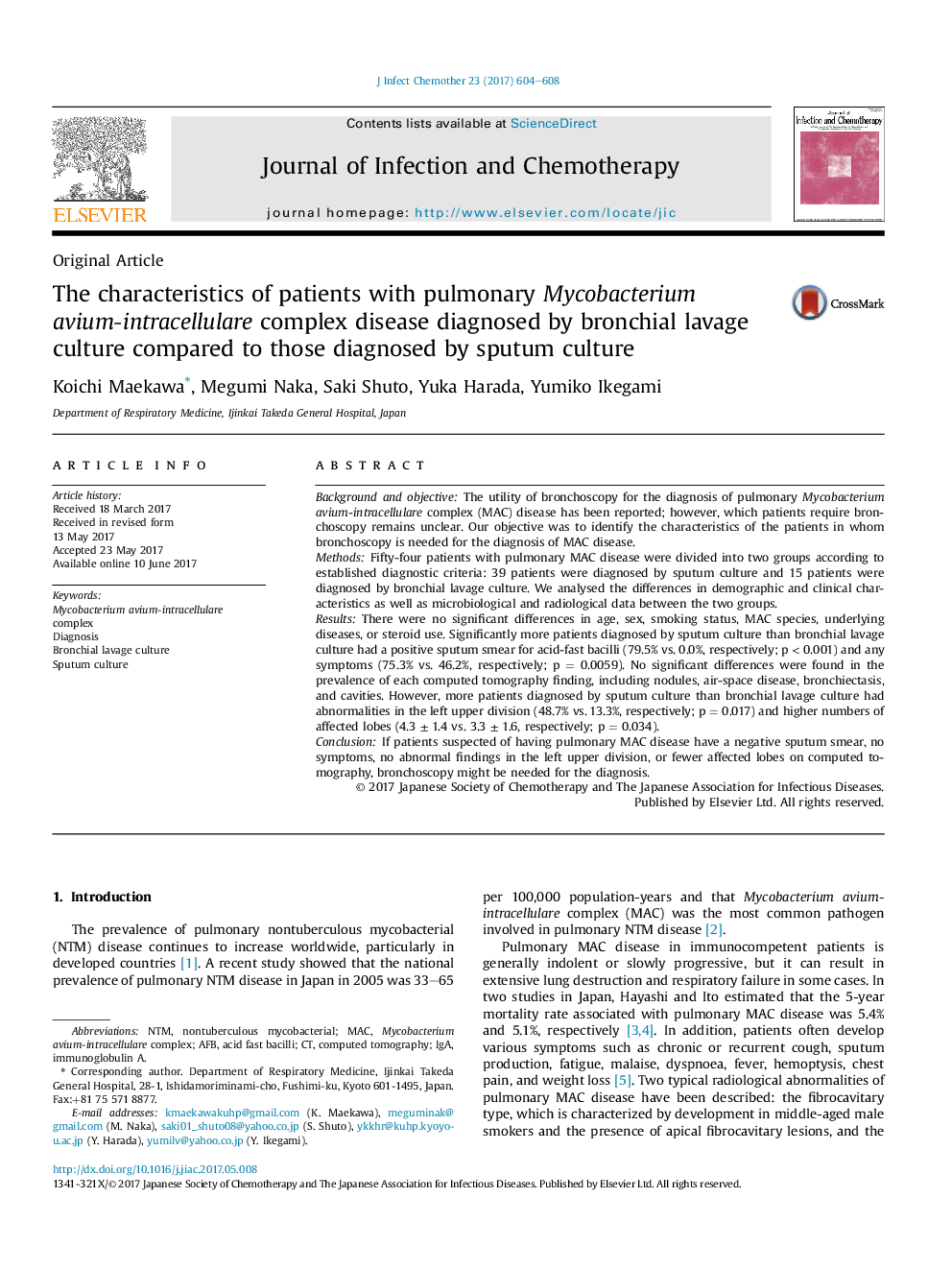| Article ID | Journal | Published Year | Pages | File Type |
|---|---|---|---|---|
| 5668838 | Journal of Infection and Chemotherapy | 2017 | 5 Pages |
Background and objectiveThe utility of bronchoscopy for the diagnosis of pulmonary Mycobacterium avium-intracellulare complex (MAC) disease has been reported; however, which patients require bronchoscopy remains unclear. Our objective was to identify the characteristics of the patients in whom bronchoscopy is needed for the diagnosis of MAC disease.MethodsFifty-four patients with pulmonary MAC disease were divided into two groups according to established diagnostic criteria: 39 patients were diagnosed by sputum culture and 15 patients were diagnosed by bronchial lavage culture. We analysed the differences in demographic and clinical characteristics as well as microbiological and radiological data between the two groups.ResultsThere were no significant differences in age, sex, smoking status, MAC species, underlying diseases, or steroid use. Significantly more patients diagnosed by sputum culture than bronchial lavage culture had a positive sputum smear for acid-fast bacilli (79.5% vs. 0.0%, respectively; p < 0.001) and any symptoms (75.3% vs. 46.2%, respectively; p = 0.0059). No significant differences were found in the prevalence of each computed tomography finding, including nodules, air-space disease, bronchiectasis, and cavities. However, more patients diagnosed by sputum culture than bronchial lavage culture had abnormalities in the left upper division (48.7% vs. 13.3%, respectively; p = 0.017) and higher numbers of affected lobes (4.3 ± 1.4 vs. 3.3 ± 1.6, respectively; p = 0.034).ConclusionIf patients suspected of having pulmonary MAC disease have a negative sputum smear, no symptoms, no abnormal findings in the left upper division, or fewer affected lobes on computed tomography, bronchoscopy might be needed for the diagnosis.
